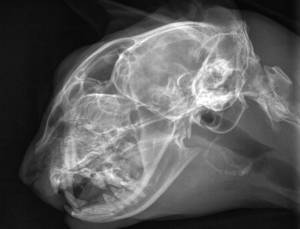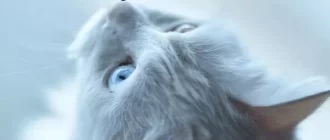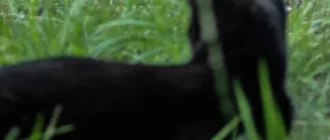It is not unusual for young orange tabby cats to have dark spots on their noses, as well as on their lips and around their eyes.
Lentigo simplex is a condition that resembles freckles in humans. It does not cause any harm, itchiness, or pain. Although these spots can be an adorable feature on a cat’s face, if there are any other abnormal marks or problems on their nose, it is advisable to have them examined by a veterinarian.
It’s important for cat owners to keep in mind that these marks are not indicative of sickness, but rather are linked to the temperature and moisture levels of their surroundings.
Possible causes of black spots on a cat’s nose
Although black spots on a cat’s nose may raise concerns, they may not always be a cause for alarm. Although some spots may signal a more severe ailment, others are entirely benign. If you’re curious about the reason for these black spots, here are a few potential explanations:
- Lentigo simplex: A condition often seen in orange tabbies or calico cats.
- Sun exposure: Cats with light-colored hair coats are prone to sunburn and skin cancer on their noses, ears, and around their eyes.
- Age: As cats age, they may develop more freckles.
- Genetics: Some cats are just more prone to developing spots than others.
- Infection or inflammation: While rare, spots can sometimes be a sign of a bacterial or fungal infection.
If you have any concerns about your cat’s spots, always consult with your veterinarian for proper diagnosis and treatment.
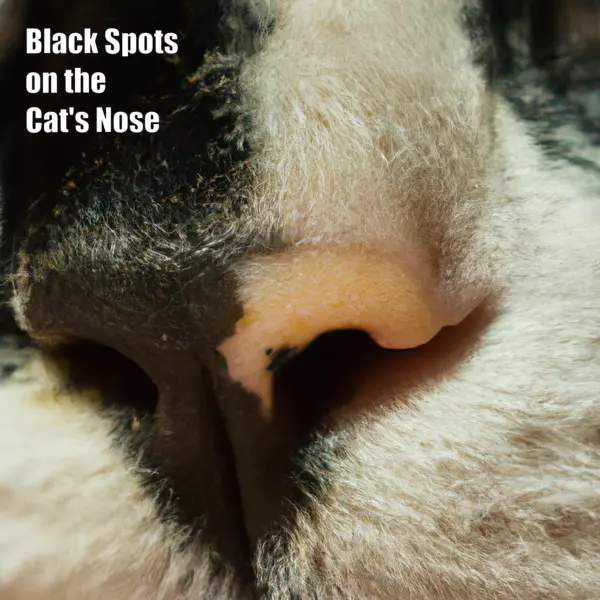
What you can do?
If you have noticed black spots on your cat’s nose, there are a few things you can do to keep them healthy.
By performing consistent grooming on cats, it is possible to eliminate any dirt or unwanted substances which could potentially clog their pores. This task can be accomplished using either a moistened cloth or specialized cat wipes.
If your cat tends to develop black spots from being in the sun too much, you can keep them out of the sun for shorter periods of time and prevent more damage by using sunscreen or safe ink on their nose.
It is crucial to bring your cat to the veterinarian for a check-up if you see any modifications in the black markings, like swollen or irritated parts. Remember that knowing your cat’s well-being and habits is critical in maintaining their well-being and contentment.
When to see a vet
It’s always best to consult a vet when you notice any unusual changes in your cat’s nose.
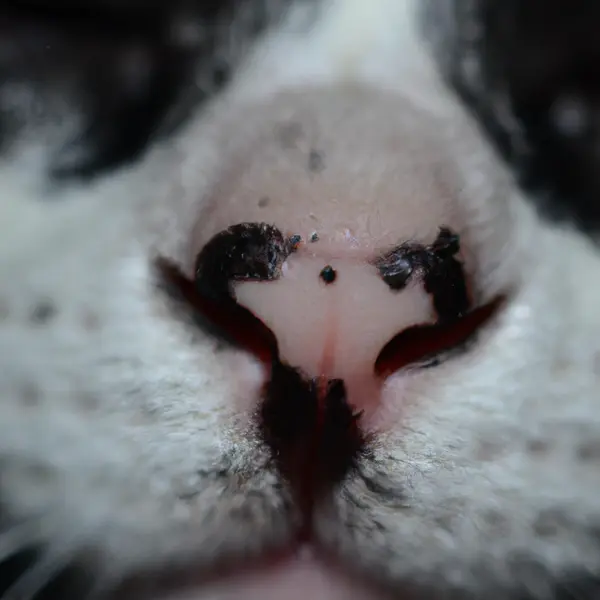
black spots on cat nose
While black spots on the nose are often harmless and are simply a result of lentigo, it’s still important to have them checked out.
If you see any raised, inflamed spots or if your cat seems to be in pain or discomfort, it’s time to take them to the vet. Cats and dogs are also prone to sunburn and subsequent skin cancer on their noses, so make sure to limit their sun exposure and consult your vet about protective measures.
Getting help from a professional is crucial to improve your cat’s health and overall condition. Therefore, don’t wait too long to seek assistance and get early treatment.
Preventing black spots on a cat’s nose
Preventing black spots on your cat’s nose can be quite challenging, but it’s not impossible. First of all, limiting your cat’s exposure to the sun can be really helpful in preventing lentigo spots from appearing.
Indoor cats are less prone to lentigo compared to outdoor kitties. However, even indoor cats still need some sunshine for vitamin D production. Using sunscreen can provide extra protection for your cat’s delicate nose.
Applying a little non-toxic ink formulated for livestock to your cat’s nose (don’t worry, it’s safe) can be an effective alternative to sunscreen. It may also help to feed your cat a high-quality, balanced diet to support healthy skin and fur.
Regular vet visits are also crucial to monitoring your cat’s health, including any changes to their nose. With proper care and attention, you can keep your feline friend healthy and happy without the worry of black spots on their nose.
Conclusion
Black spots on a cat’s nose are usually not a cause for concern, especially if your cat is an orange tabby or a calico cat. Most often, these spots are a cosmetic condition known as lentigo simplex and are similar to freckles in humans.
However, if you notice raised or inflamed spots on your cat’s nose that cause soreness and pain, it is important to have them examined by your vet.
It is important to limit your cat’s sun exposure to reduce the risk of solar damage and subsequent skin cancer on their nose, ears, and around their eyes. Consult with your veterinarian to come up with a customized plan to protect your cat’s delicate nose.
Remember, familiarity with your cat and their behavior can help you detect any signs of illness and keep them healthy.
